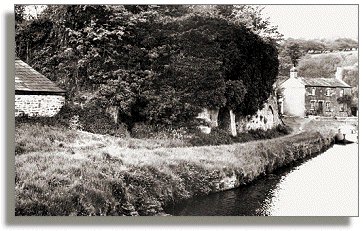Old limekilns
by the canal
at Llangattock


| Furnaces for making fertiliser | |||
|
Another very important bulk cargo
which was moved in huge quantities on the local tramroads and on the Brecon
& Abergavenny Canal was lime and limestone. |
|
|
Old limekilns |
 |

|
|
| The limekilns above were on the canal bank just on the edge of the town of Brecon. | |||
|
The photograph above
gives a good idea of how close the old kilns were to the canal to make
it easy to transfer the lime to canal boats
for delivery to farmers and landowners. Lime could be a very hazardous
material to handle after it came out of the kilns, as you can see from
our Montgomery Canal pages.
|
|
|||
|
RDR
|
||||